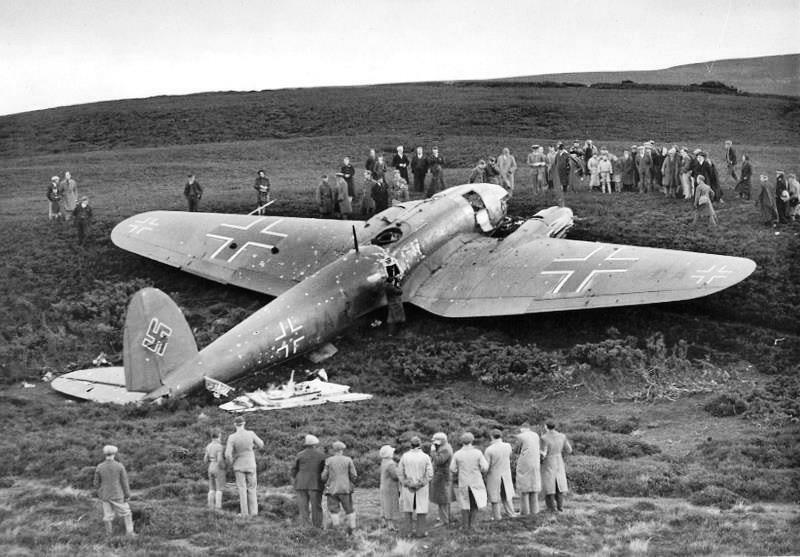On 28 October 1939, a Heinkel He 111 bomber was intercepted by Spitfires of No. 602 (City of Glasgow) Squadron and No. 603 (City of Edinburgh) Squadron and shot down near the village of Humbie in East Lothian. It was the first German aircraft to be brought down on British soil during the Second World War.
On the morning of 28 October 1939 the He 111H-2 of Kampfgeschwader 26, captained by Lieutenant Rolf Niehoff, took off from Westerland-Sylt. The mission for Niehoff and his crew was to conduct a reconnaissance flight over the upper Firth of Clyde and the Firth of Forth searching for Royal Navy warships for future bombing raids.
The Luftwaffe had already attacked warships in the Firth of Forth on 16 October and at Scapa Flow on 17 October so the Royal Navy and the Royal Air Force were on high alert with Spitfires from No. 602 (City of Glasgow) Squadron and No. 603 (City of Edinburgh) Squadron up patrolling the Firth of Forth approaches.
After flying over the Clyde, Niehoff headed over to the Firth of Forth where his aircraft was met with a barrage of anti-aircraft fire from the warships anchored on the Forth. One round hit the aircraft but did not inflict serious damage. The Spitfires of 602 and 603 Squadrons were soon alerted to the presence of the German bomber and were vectored towards it.
The Spitfires poured rounds into the Heinkel, killing radio operator/gunner Bruno Reinmann and flight engineer/gunner Gottlieb Kowalke as well as seriously wounding the pilot Kurt Lehmkuhl. Both of the aircraft’s engines were shot to pieces and with insufficient height to bail out a crash landing was the only option.
Despite being seriously injured Lehmkuhl was able to remain in control of the aircraft and gliding over the Lammermuir Hills he spotted a good location to bring the aircraft down, crashlanding just to the east of the village of Humbie. Niehoff suffered a broken back in the rough landing.
Shortly after the crash locals began to arrive at the site including a doctor who tended to the injured crew. Lehmkuhl was later taken to a hospital in Edinburgh while Niehoff was taken into custody by the local police before being taken to Edinburgh Castle and then the Tower of London for questioning and imprisonment.
The intact Heinkel was of great interest to the Air Ministry and both of the aircraft’s Daimler-Benz DB 601 engines were taken away for examination along with the fuselage for technical study.

